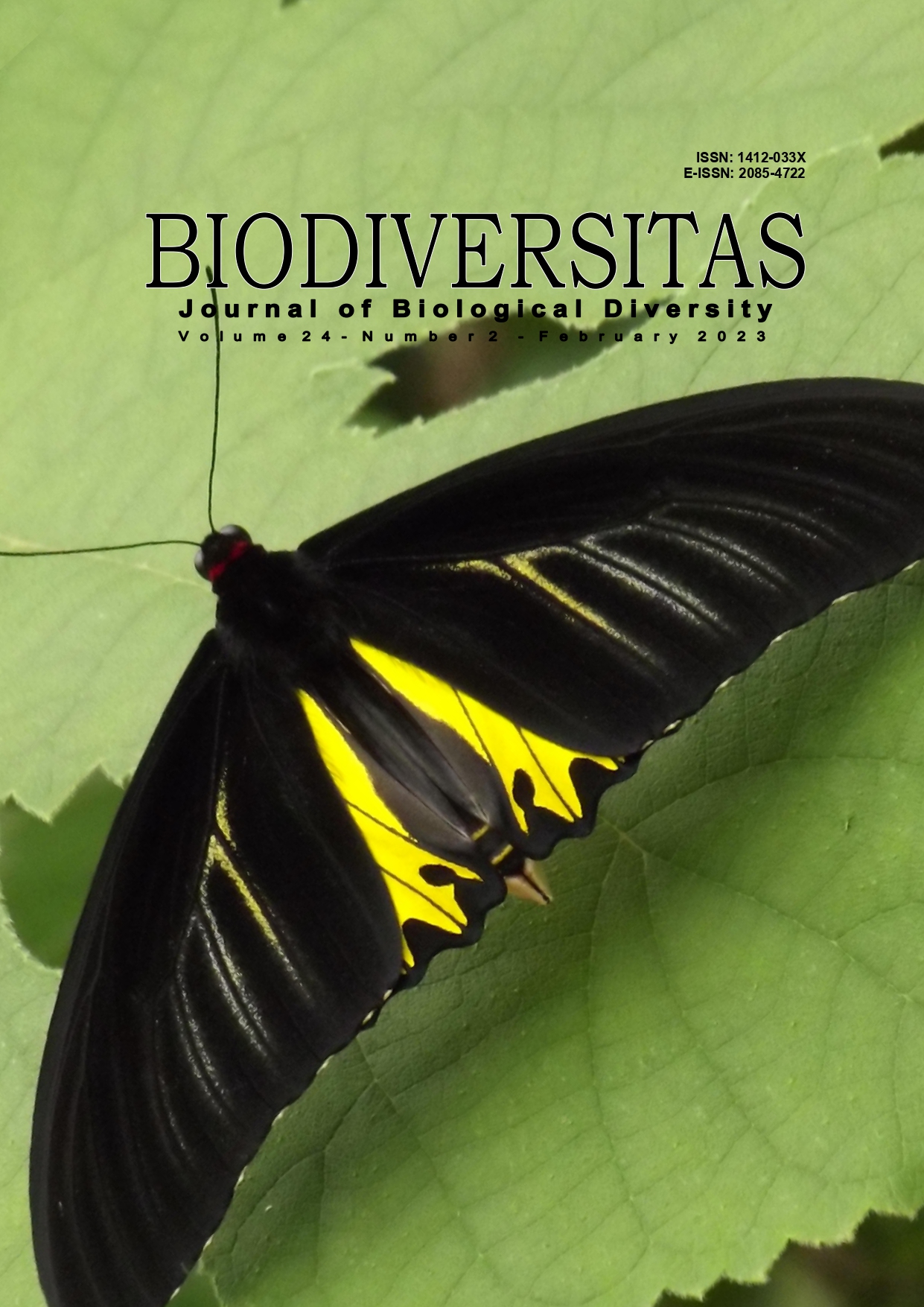State of human tiger conflict around Gunung Leuser National Park in Langkat Landscape, North Sumatra, Indonesia
##plugins.themes.bootstrap3.article.main##
Abstract
Abstract. Patana P, Alikodra HS, Mawengkang H, Harahap RH. 2023. State of human tiger conflict around Gunung Leuser National Park in Langkat Landscape, North Sumatra, Indonesia. Biodiversitas 24: 837-846. The Sumatran tiger (Panthera tigris sumatrae) is one of the key species which is considered an endangered species by the IUCN (2008). There has also been a recent threat to their population due to conflict with humans. Information about landscape characteristics and livelihood related to human-tiger conflict (HTC) is needed for a proper mitigation strategy based on local parameters. Therefore, this study was carried out around Gunung Leuser National Park (GLNP) using quantitative and qualitative methods. Principal component analysis (PCA) was used to analyze and map the risk of HTC using landscape characteristics. The physical factors, including land cover, slope, elevation, distance from rivers, and settlement, were analyzed. The livelihood aspect related to land use change was described descriptively and became a major analysis. The study area is located in the buffer zone of GLNP in Langkat District. The results showed that the Eigen weight value for the slope, elevation, and land cover factor was greater than the distance to the river and settlement. The spatial analysis also revealed that Langkat Landscape was in the medium risk of HTC by covering 60% area, while 40% was in the interval of high to very high risk. Furthermore, the high dependence on land for agriculture and the activity of livestock has become a trigger for more massive HTC in the last three years. It is a challenge in human-tiger conflict mitigation to involve the resolution of people’s livelihoods surrounding the national park. The livelihood approach could be a future solution that bridges human and tiger aspects, in addition to habitat management and protecting conservation areas.

